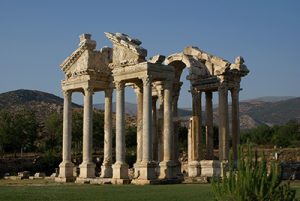 That title was a crack I made around 2006 when I became aware of the new wave of false teaching entering the church. One aspect of that teaching hinted that our experience with Jesus was (should be?) sexual. (Christians who use a mantra, as in contemplative prayer, and go into an altered state of consciousness sometimes have erotic experiences, which they mistakenly believe to be “union” with God/Jesus.)
That title was a crack I made around 2006 when I became aware of the new wave of false teaching entering the church. One aspect of that teaching hinted that our experience with Jesus was (should be?) sexual. (Christians who use a mantra, as in contemplative prayer, and go into an altered state of consciousness sometimes have erotic experiences, which they mistakenly believe to be “union” with God/Jesus.)
There was new interest in/promotion of the “bridal mysticism” of medieval nuns like Teresa of Avila: “Body and spirit are in the throes of a sweet, happy pain…and a spell of strangulation…swoon-like weakness…” There were quotes in Christian books, like Tony Campolo saying, “There is nothing wrong . . . with eroticism in worship.” And Ann Voskamp: “Mystical union…. God as Husband in sacred wedlock, bound together, body and soul… To know him the way Adam knew Eve. Spirit skin to spirit skin…” Ken Wilson: “I was having feelings of connection with the divine… [that] reminded me very much of the amorous feelings I have for my wife.”
You may not have connected the dots, but go back to the Old Testament (and general history) as a reminder that pagan religions typically include sexual ritual. And when believers in God step away from God’s path, it inevitably trends toward an “anything goes” sexual culture. There are loads of Scripture warnings against following pagan practices (ex: Deuteronomy 12:30-32)—not to mention any number of explanations of failures to obey those warnings (ex: 1 Kings 14:22-24). And at some point, says 2 Kings 23:7, the quarters of shrine prostitutes were actually “in the temple of the Lord”!
Well, those people were idiots, right? We in the church today would never be tricked into that sort of thing.
But see, you and/or your small group are almost surely using books written by people who are on that path, or who at least are being influenced by such people. (You can partly discern a writer’s spiritual family tree by looking at who is quoted in the endnotes.) The average Christian probably reads quotes like those above and brushes them aside with, “Oh, surely it doesn’t mean THAT!” But people engaged in mystical practice DO mean that.
And so we come to the next level, with such ideas now being even more openly promoted. In 2017, a book came out called Tantric Jesus: The Erotic Heart of Early Christianity. (Tantrism is sex magic. Look it up.) The sales pitch is that this “wisdom” of Jesus resonates with the “tantric yogas of India and Tibet.” This thing is so blasphemous against the Lord, I can’t even bring myself to give a sample quotation. The U.S. secular culture is already far along the “anything goes” sexual path. The church will follow a la the Jewish religious leaders of the OT—that’s how it works—unless we have the savvy to recognize that “What’s next—temple prostitutes?” could become more than just a wisecrack.
What to do? We must examine, with discernment, the teachings of the spiritual mentors we’re following. “Watch your life and doctrine closely,” Paul told Timothy (1 Timothy 4:16), who was working in Ephesus, the HQ of the sometimes-erotic worship of the goddess Artemis. Let’s read the Old Testament and take a hard look at what happens when believers don’t stay on alert. Then we’ll be equipped to expose false teaching when we find it, instead of overlooking/endorsing it.



Tantrism is not “sex magic,” although it is “commonly but incorrectly associated with sex.” It is still not a Christian practice. It is a religious practice of the Buddhists, Jainists, and Hindus. Tantra is defined as a combination of texts, techniques, rituals, monastic practices, meditation, yoga, and ideology.
(You did say “look it up.”)
Other than that misstatement, your article is fabulous, and very worth the read.
Thanks for your comment.
In tantrism, “twilight language” is often used to disguise the true nature of the rituals. The excerpt is from “The Shadow of the Dalai Lama” written by former Tibetan Buddhists:
“In order to keep hidden from the public all the offensive things which are implicated by the required breaches of taboo, some tantra texts make use of a so-called “twilight language” (samdhya-bhasa). This has the function of veiling references to taboo substances, private bodily parts, and illegal deeds in poetic words, so that they cannot be recognized by the uninitiated. For example, one says “lotus” and means “vagina”, or employs the term “enlightenment consciousness” (bodhicitta) for sperm, or the word “sun” (surya) for menstrual blood. Such a list of synonyms can be extended indefinitely.”
Tantra is the name of the ancient Hindu sacred texts that contain certain rituals and secrets. Some deal with taking energies brought forth in meditation through the chakras and combining them with lovemaking to enhance sexual experiences.